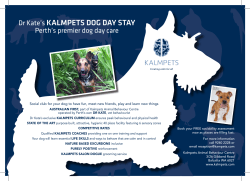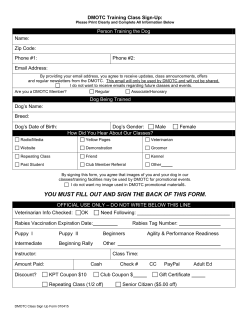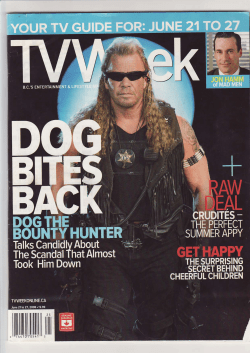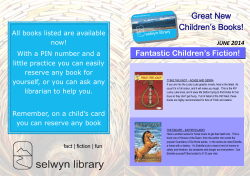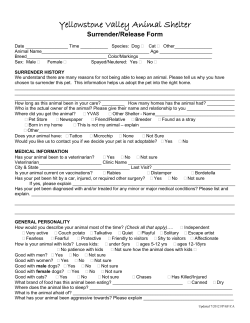
University of Arizona Aphasia Research Project
University of Arizona Aphasia Research Project Copy and Recall Treatment (CART) Protocol CART treatment involves the re-training of specific orthographic representations for a given set of words. Typically, functional target words are chosen by the patient with the help of the clinician (e.g. words for various ADLs, names of family members, hobbies). Select 20-25 words to train in sets of 5 at a time. Alternatively, CART may be used to train “key words” in preparation for working on phonology, so that words are selected with initial phonemes representing the phonemes to be targeted for sound-letter correspondence training. Our recent work has used 24 picturable Consonant-Vowel (CV) and Consonant-Vowel-Consonant (CVC) nouns, representing twenty initial consonant sounds and 12 vowels (see list below). CART procedure during treatment session: 1. Present picture to participant (for example, ‘dog’) Say: “What is this? Can you tell me the name?” -Correct name: “Yes, it’s a dog. Can you spell dog?” -Incorrect name: “It’s a dog. Say dog. Can you spell dog?” -Correct spelling: Provide feedback and move to next item. -Incorrect spelling: Proceed through the following steps. 2. Present a handwritten model of the word, either written by the clinician or from an example of the patient’s previous correct written response. Say: “Here is the word dog. Can you copy it?” Encourage copying of the word three times, giving feedback about accuracy with each copying attempt. 3. Cover up all written examples of the word. Show the picture, and prompt recall of the spelling three times. Say: “Let’s see if you remember it. Write the word dog.” Provide feedback and then cover the word two additional times, prompting recall. -Correct: Move on to the next word -Incorrect: Repeat steps 2 and 3. 4. If correct recall cannot be achieved after several trials, move on to the next word. If there is time in the session, try to return to the difficult word. Provide extra homework practice with difficult words, as well. Homework: We use a talking photo album to provide spoken and written models of the target words for homework practice. The pictured target word is placed in the front of each album page with a recorded voice providing the name of the item. The back of each page has the written word associated with the picture. Therapy sessions are used to train the participant to use the photo album and pictures for homework sessions. Homework is assigned for 6-7 days a week. The photo album provides visual and auditory stimuli, and structured homework pages are provided. Homework includes the current set of words being trained, as well as work with previous sets. Test pages for “recall” are included (see the link to homework stimuli to see the homework sheets used in the Aphasia Research Project). Aphasia Research Project CART Sets (for later use as “key words” for phonology training) Set 1 top dog net web van hat Set 2 fire pie bone goat safe cake Set 3 moon zoo ship chin rug judge Set 4 leaf three book foot mouth cow Relevant references: Beeson, P.M. (1999). Treating acquired writing impairment: Strengthening graphemic representations. Aphasiology, 13, 367-386. Beeson, P.M., Hirsch, F., & Rewega, M. (2002). Successful single-word writing treatment: Experimental analysis of four cases. Aphasiology, 16, 456-473-491. Beeson, P. M., Rising, K., & Volk, J. (2003). Writing treatment for severe aphasia. Journal of Speech, Language, Hearing Research, 46, 1038-1060. Beeson, P.M. & Egnor, H. (2006). Combining treatment for written and spoken naming. Journal of the International Neuropsychological Society, 12, 816-827.
© Copyright 2025
